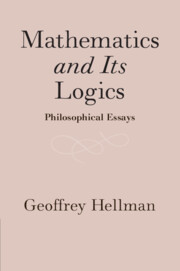Book contents
- Mathematics and Its Logics
- Mathematics and Its Logics
- Copyright page
- Contents
- Acknowledgements
- Introduction
- Part I Structuralism, Extendability, and Nominalism
- Part II Predicative Mathematics and Beyond
- 7 Predicative Foundations of Arithmetic
- 8 Challenges to Predicative Foundations of Arithmetic
- 9 Predicativism as a Philosophical Position
- 10 On the Gödel–Friedman Program
- Part III Logics of Mathematics
- Index
- References
10 - On the Gödel–Friedman Program
from Part II - Predicative Mathematics and Beyond
Published online by Cambridge University Press: 26 January 2021
- Mathematics and Its Logics
- Mathematics and Its Logics
- Copyright page
- Contents
- Acknowledgements
- Introduction
- Part I Structuralism, Extendability, and Nominalism
- Part II Predicative Mathematics and Beyond
- 7 Predicative Foundations of Arithmetic
- 8 Challenges to Predicative Foundations of Arithmetic
- 9 Predicativism as a Philosophical Position
- 10 On the Gödel–Friedman Program
- Part III Logics of Mathematics
- Index
- References
Summary
As is well known, Gödel [1931] showed, in principle, given any “good” mathematical theory T extending elementary arithmetic, how to construct sentences in the language of T which are undecidable in T, where “T is good” means: (1) T is formally consistent, (2) T is formal, in the sense that the set of (Gödel codes of) its theorems is recursively enumerable, and (3) T numeralwise represents the recursive functions of natural numbers. As an immediate corollary, it follows that no such T can prove all and only the true sentences of (even first-order) arithmetic (i.e. true in the standard model).
- Type
- Chapter
- Information
- Mathematics and Its LogicsPhilosophical Essays, pp. 154 - 172Publisher: Cambridge University PressPrint publication year: 2021



